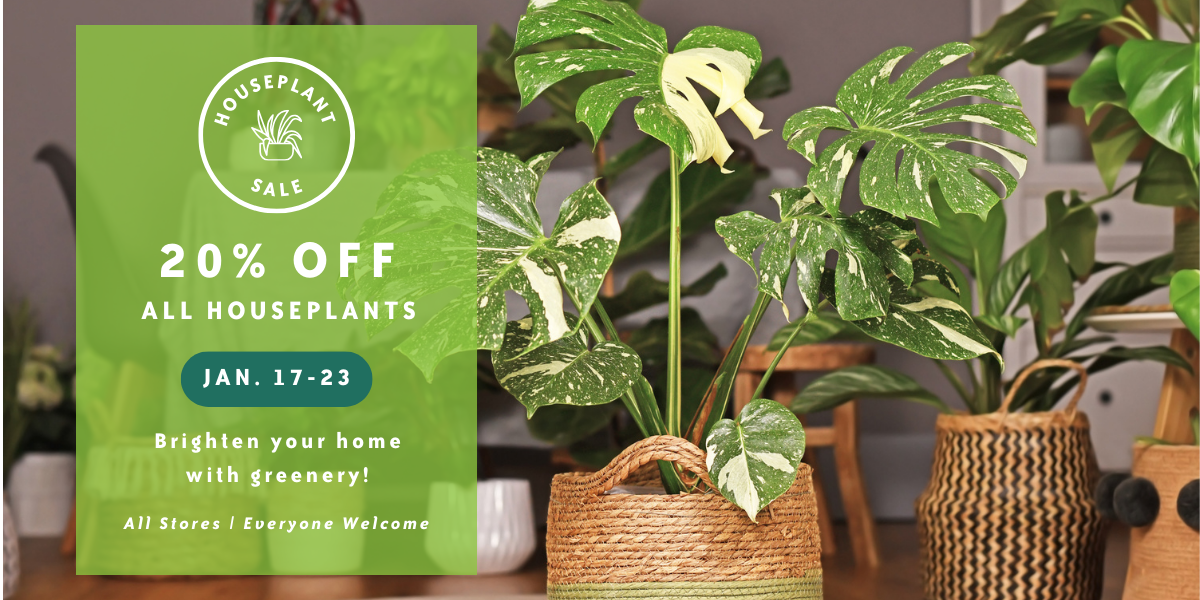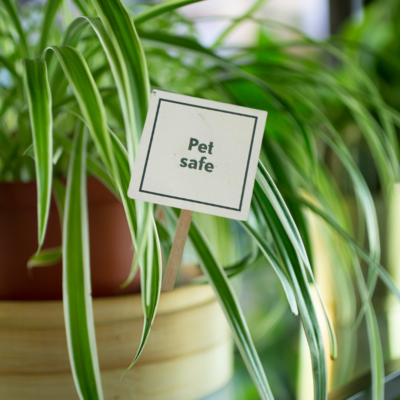
Kick the winter blues with our 20% off houseplant sale from Jan. 17-23! With their lush green leaves and natural beauty, houseplants not only breathe life into the cold, dark, and dreary winter days but also offer numerous benefits. Beyond their aesthetic appeal, houseplants can help ease stress, boost feelings of focus and productivity, and brighten your mood. Take advantage of our special sale to bring both warmth and wellness into your home. Whether you’re a beginner or a seasoned plant parent, you can shop a variety of plants at your co-op!
Plant Selection
Choose plants that will do well in your home or office environment. Keep in mind:
- What kind of light do you have?
- Is your space drafty or cold?
- What kind of time do you have to care for the plant?
- Do you have pets? Look for the “Pet Safe” signs that will be placed in plants that are non-toxic for your pets.

Lighting
Plants need light to photosynthesize — the process of converting light, in combination with water and oxygen, into the energy they need to grow. Too little light can cause plants to lose their color, become leggy, and keep them from producing flowers. Too much light might scorch the leaves. Generally, flowering plants need around 14 hours a day of light and foliage needs around 12.
Low-Light Plants
north-facing window
- Dracaena
- English Ivy
- Pothos
- Philodendron
- Snake Plants
- Peace Lily
- Zamioculcas
Moderate-Light Plants
east-facing window or out of the direct light of a west-facing window
- Norfolk Pine
- Fiddle Leaf Fig
- Spider Plants
- Hoya
- Alocasia
- Monstera
- Peperomia
- Jade
- Croton
- Christmas Cactus
- African Violets
High-Light Plants
south- or southwest-facing window
- Cacti
- Succulents
- Flowering plants like Kalanchoe
- Gardenia
- Jasmine
- Poinsettias
- Caladium
- Orchids
Plant Care Tips
Watering and Fertilizing
- Water the soil at the base of the plant and avoid watering the leaves. Ensure your pot drains well and avoid letting the pot stand in water, which can cause the roots to rot.
- Fertilize plants when they are actively growing and dilute fertilizer to half-strength.
Preventing Pests
- Select plants that will do well in your home. The right environment will help keep them less vulnerable to pests and disease.
- Examine your plants regularly and keep the soil surface free of dead leaves or flowers. Prune out dead branches and stems.
- Keep the leaves dust-free by wiping them down with a soft cloth or rinsing them with a shower. Never use leaf-shine products.
- If you find pests in your plants, isolate the plant to keep them from spreading. Most common pests can be managed with nonchemical solutions, such as sticky traps, repotting, and wiping or removing pests from leaves with cotton swabs or tweezers.
Repotting
- Repot your plant when the roots grow out of the drainage holes. Choose a new container two inches larger in diameter than the original.
- Use new, sterile soil when repotting. Never pot indoor plants using soil from the garden, which can introduce pests.

